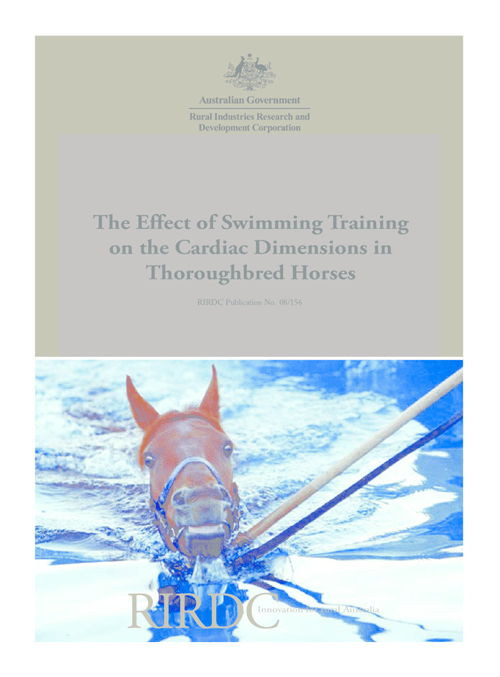This study examined swimming training in relation to its impact on structural development of the heart.
If cardiac adaptations are occurring with swimming, this understanding of the potential benefits will assist horse trainers in being able to more fully structure training programs to maximise the benefits obtained with the potential of reducing training based injuries.
Swimming historically has been used in both humans and horses as a means of stimulating adaptations with the goal of improving fitness. In the human area the benefits of swim training have long been known (Fry 1986). However for the horse actual benefits obtained have not been established. Swimming studies in horses have been done by Thomas et al. (1980) looking at cardiorespiratory responses to tethered-swimming, Misumi et al. (1994-1995) in which they investigated the effectiveness of a swimming exercise test for evaluating changes in performance measures and Hobo et al. (1998) who looked at respiratory function during swimming.
As the horse is predominantly an aerobic athlete and one of the major components of aerobic performance is cardiac function, this study investigated whether traditional pool swimming would provide a sufficient stimulus to the heart, in addition to that experienced by normal race training, resulting in a structural adaptation to the cardiac muscle.
The project examined the changes in cardiac dimensions in horses involved in traditional training compared to those in traditional training coupled with swimming.
It was hypothesised that swimming training would have a positive effect on the heart by inducing an adaptation in the left ventricular mass and dimensional volume.





